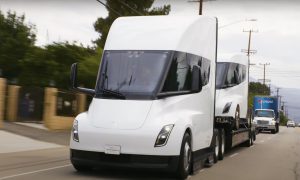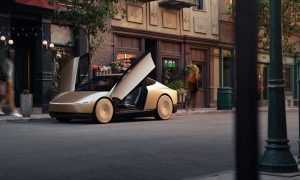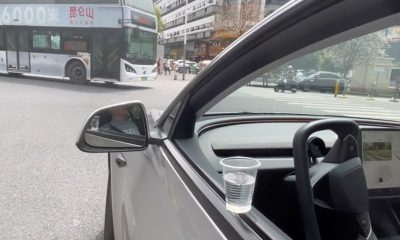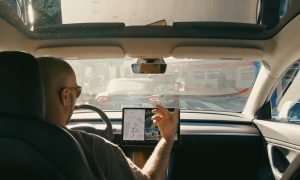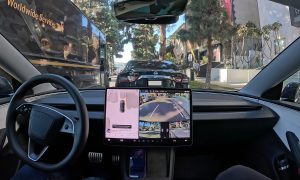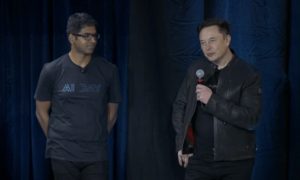News
Stanford studies human impact when self-driving car returns control to driver
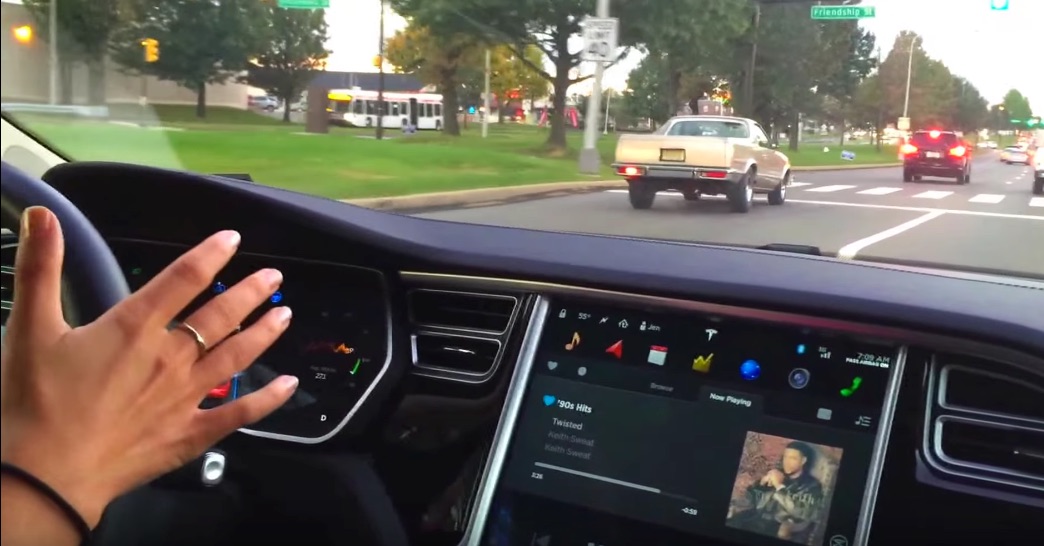
Researchers involved with the Stanford University Dynamic Design Lab have completed a study that examines how human drivers respond when an autonomous driving system returns control of a car to them. The Lab’s mission, according to its website, is to “study the design and control of motion, especially as it relates to cars and vehicle safety. Our research blends analytical approaches to vehicle dynamics and control together with experiments in a variety of test vehicles and a healthy appreciation for the talents and demands of human drivers.” The results of the study were published on December 6 in the first edition of the journal Science Robotics.
Holly Russell, lead author of study and former graduate student at the Dynamic Design Lab says, “Many people have been doing research on paying attention and situation awareness. That’s very important. But, in addition, there is this physical change and we need to acknowledge that people’s performance might not be at its peak if they haven’t actively been participating in the driving.”
The report emphasizes that the DDL’s autonomous driving program is its own proprietary system and is not intended to mimic any particular autonomous driving system currently available from any automobile manufacturer, such as Tesla’s Autopilot.
The study found that the period of time known as “the handoff” — when the computer returns control of a car to a human driver — can be an especially risky period, especially if the speed of the vehicle has changed since the last time the person had direct control of the car. The amount of steering input required to accurately control a vehicle varies according to speed. Greater input is needed at slower speeds while less movement of the wheel is required at higher speeds.
People learn over time how to steer accurately at all speeds based on experience. But when some time elapses during which the driver is not directly involved in steering the car, the researchers found that drivers require a brief period of adjustment before they can accurately steer the car again. The greater the speed change while the computer is in control, the more erratic the human drivers were in their steering inputs upon resuming control.
“Even knowing about the change, being able to make a plan and do some explicit motor planning for how to compensate, you still saw a very different steering behavior and compromised performance,” said Lene Harbott, co-author of the research and a research associate in the Revs Program at Stanford.
Handoff From Computer to Human
The testing was done on a closed course. The participants drove for 15 seconds on a course that included a straightaway and a lane change. Then they took their hands off the wheel and the car took over, bringing them back to the start. After familiarizing themselves with the course four times, the researchers altered the steering ratio of the cars at the beginning of the next lap. The changes were designed to mimic the different steering inputs required at different speeds. The drivers then went around the course 10 more times.
Even though they were notified of the changes to the steering ratio, the drivers’ steering maneuvers differed significantly from their paths previous to the modifications during those ten laps. At the end, the steering ratios were returned to the original settings and the drivers drove 6 more laps around the course. Again the researchers found the drivers needed a period of adjustment to accurately steer the cars.
The DDL experiment is very similar to a classic neuroscience experiment that assesses motor adaptation. In one version, participants use a hand control to move a cursor on a screen to specific points. The way the cursor moves in response to their control is adjusted during the experiment and they, in turn, change their movements to make the cursor go where they want it to go.
Just as in the driving test, people who take part in the experiment have to adjust to changes in how the controller moves the cursor. They also must adjust a second time if the original response relationship is restored. People can performed this experiment themselves by adjusting the speed of the cursor on their personal computers.
“Even though there are really substantial differences between these classic experiments and the car trials, you can see this basic phenomena of adaptation and then after-effect of adaptation,” says IIana Nisky, another co-author of the study and a senior lecturer at Ben-Gurion University in Israel “What we learn in the laboratory studies of adaptation in neuroscience actually extends to real life.”
In neuroscience this is explained as a difference between explicit and implicit learning, Nisky explains. Even when a person is aware of a change, their implicit motor control is unaware of what that change means and can only figure out how to react through experience.
Federal and state regulators are currently working on guidelines that will apply to Level 5 autonomous cars. What the Stanford research shows is that until full autonomy becomes a reality, the “hand off” moment will represent a period of special risk, not because of any failing on the part of computers but rather because of limitations inherent in the brains of human drivers.
The best way to protect ourselves from that period of risk is to eliminate the “hand off” period entirely by ceding total control of driving to computers as soon as possible.
News
Tesla UK sales see 14% year-over-year rebound in June: SMMT data
The SMMT stated that Tesla sales grew 14% year-over-year to 7,719 units in June 2025.

Tesla’s sales in the United Kingdom rose in June, climbing 14% year-over-year to 7,719 units, as per data from the Society of Motor Manufacturers and Traders (SMMT). The spike in the company’s sales coincided with the first deliveries of the updated Model Y last month.
Model Y deliveries support Tesla’s UK recovery
Tesla’s June performance marked one of its strongest months in the UK so far this year, with new Model Y deliveries contributing significantly to the company’s momentum.
While the SMMT listed Tesla with 7,719 deliveries in June, independent data from New AutoMotive suggested that the electric vehicle maker registered 7,891 units during the month instead. However, year-to-date figures for Tesla remain 2% down compared to 2024, as per a report from Reuters.
While Tesla made a strong showing in June, rivals are also growing. Chinese automaker BYD saw UK sales rise nearly fourfold to 2,498 units, while Ford posted the highest EV growth among major automakers, with a more than fourfold increase in the first half of 2025.
Overall, the UK’s battery electric vehicle (BEV) demand surged 39% to to 47,354 units last month, helping push total new car sales in the UK to 191,316 units, up 6.7% from the same period in 2024.
EV adoption accelerates, but concerns linger
June marked the best month for UK car sales since 2019, though the SMMT cautioned that growth in the electric vehicle sector remains heavily dependent on discounting and support programs. Still, one in four new vehicle buyers in June chose a battery electric vehicle.
SMMT Chief Executive Mike Hawes noted that despite strong BEV demand, sales levels are still below regulatory targets. “Further growth in sales, and the sector will rely on increased and improved charging facilities to boost mainstream electric vehicle adoption,” Hawes stated.
Also taking effect this week was a new US-UK trade deal, which lowers tariffs on UK car exports to the United States from 27.5% to 10%. The agreement could benefit UK-based EV producers aiming to expand across the country.
News
Tesla Model 3 ranks as the safest new car in Europe for 2025, per Euro NCAP tests
Despite being on the market longer than many of its rivals, the Tesla Model 3 continues to set the bar for vehicle safety.

The Tesla Model 3 has been named the safest new car on sale in 2025, according to the latest results from the Euro NCAP. Among 20 newly tested vehicles, the Model 3 emerged at the top of the list, scoring an impressive 359 out of 400 possible points across all major safety categories.
Tesla Model 3’s safety systems
Despite being on the market longer than many of its rivals, the Tesla Model 3 continues to set the bar for vehicle safety. Under Euro NCAP’s stricter 2025 testing protocols, the electric sedan earned 90% for adult occupant protection, 93% for child occupant protection, 89% for pedestrian protection, and 87% for its Safety Assist systems.
The updated Model 3 received particular praise for its advanced driver assistance features, including Tesla’s autonomous emergency braking (AEB) system, which performed well across various test scenarios. Its Intelligent Speed Assistance and child presence detection system were cited as noteworthy features as well, as per a WhatCar report.
Other notable safety features include the Model 3’s pedestrian-friendly pop-up hood and robust crash protection for both front and side collisions. Euro NCAP also highlighted the Model 3’s ability to detect vulnerable road users during complex maneuvers, such as turning across oncoming traffic.
Euro NCAP’s Autopilot caution
While the Model 3’s safety scores were impressive across the board, Euro NCAP did raise concerns about driver expectations of Tesla’s Autopilot system. The organization warned that some owners may overestimate the system’s capabilities, potentially leading to misuse or inattention behind the wheel. Even so, the Model 3 remained the highest-scoring vehicle tested under Euro NCAP’s updated criteria this year.
The Euro NCAP’s concerns are also quite interesting because Tesla’s Full Self-Driving (FSD) Supervised, which is arguably the company’s most robust safety suite, is not allowed for public rollout in Europe yet. FSD Supervised would allow the Model 3 to navigate inner city streets with only minimal human supervision.
Other top scorers included the Volkswagen ID.7, Polestar 3, and Geely EX5, but none matched the Model 3’s total score or consistency across categories. A total of 14 out of 20 newly tested cars earned five stars, while several models, including the Kia EV3, MG ZS, and Renault 5, fell short of the top rating.
Elon Musk
Why Tesla’s Q3 could be one of its biggest quarters in history
Tesla could stand to benefit from the removal of the $7,500 EV tax credit at the end of Q3.

Tesla has gotten off to a slow start in 2025, as the first half of the year has not been one to remember from a delivery perspective.
However, Q3 could end up being one of the best the company has had in history, with the United States potentially being a major contributor to what might reverse a slow start to the year.
Earlier today, the United States’ House of Representatives officially passed President Trump’s “Big Beautiful Bill,” after it made its way through the Senate earlier this week. The bill will head to President Trump, as he looks to sign it before his July 4 deadline.
The Bill will effectively bring closure to the $7,500 EV tax credit, which will end on September 30, 2025. This means, over the next three months in the United States, those who are looking to buy an EV will have their last chance to take advantage of the credit. EVs will then be, for most people, $7,500 more expensive, in essence.
The tax credit is available to any single filer who makes under $150,000 per year, $225,000 a year to a head of household, and $300,000 to couples filing jointly.
Ending the tax credit was expected with the Trump administration, as his policies have leaned significantly toward reliance on fossil fuels, ending what he calls an “EV mandate.” He has used this phrase several times in disagreements with Tesla CEO Elon Musk.
Nevertheless, those who have been on the fence about buying a Tesla, or any EV, for that matter, will have some decisions to make in the next three months. While all companies will stand to benefit from this time crunch, Tesla could be the true winner because of its sheer volume.
If things are done correctly, meaning if Tesla can also offer incentives like 0% APR, special pricing on leasing or financing, or other advantages (like free Red, White, and Blue for a short period of time in celebration of Independence Day), it could see some real volume in sales this quarter.
You can now buy a Tesla in Red, White, and Blue for free until July 14 https://t.co/iAwhaRFOH0
— TESLARATI (@Teslarati) July 3, 2025
Tesla is just a shade under 721,000 deliveries for the year, so it’s on pace for roughly 1.4 million for 2025. This would be a decrease from the 1.8 million cars it delivered in each of the last two years. Traditionally, the second half of the year has produced Tesla’s strongest quarters. Its top three quarters in terms of deliveries are Q4 2024 with 495,570 vehicles, Q4 2023 with 484,507 vehicles, and Q3 2024 with 462,890 vehicles.
-

 Elon Musk4 days ago
Elon Musk4 days agoTesla investors will be shocked by Jim Cramer’s latest assessment
-

 News1 week ago
News1 week agoTesla Robotaxi’s biggest challenge seems to be this one thing
-

 Elon Musk2 weeks ago
Elon Musk2 weeks agoFirst Look at Tesla’s Robotaxi App: features, design, and more
-

 News2 weeks ago
News2 weeks agoSpaceX and Elon Musk share insights on Starship Ship 36’s RUD
-

 News2 weeks ago
News2 weeks agoWatch Tesla’s first driverless public Robotaxi rides in Texas
-

 News1 week ago
News1 week agoWatch the first true Tesla Robotaxi intervention by safety monitor
-

 News2 weeks ago
News2 weeks agoTesla has started rolling out initial round of Robotaxi invites
-

 Elon Musk2 weeks ago
Elon Musk2 weeks agoTesla to launch in India in July with vehicles already arriving: report


